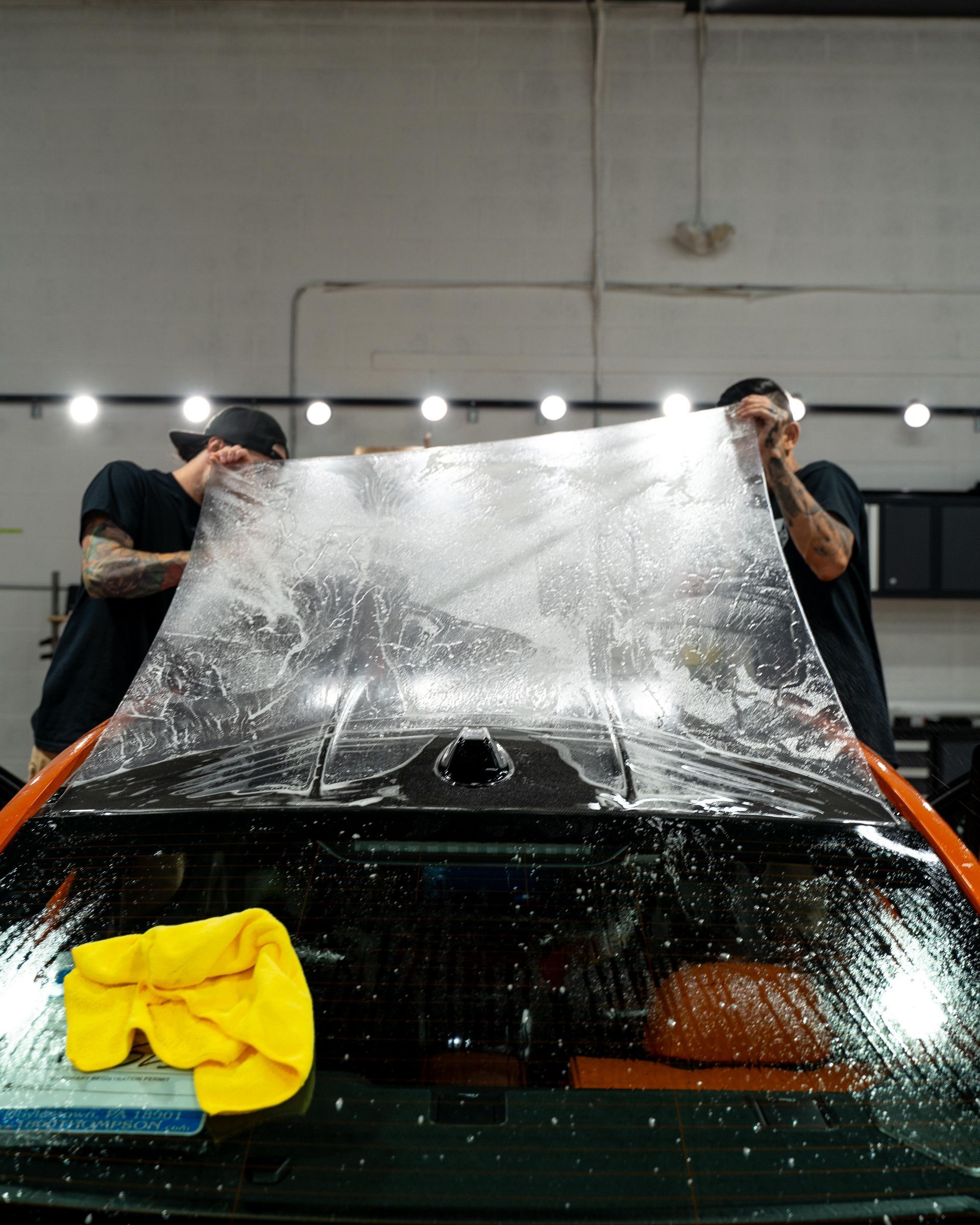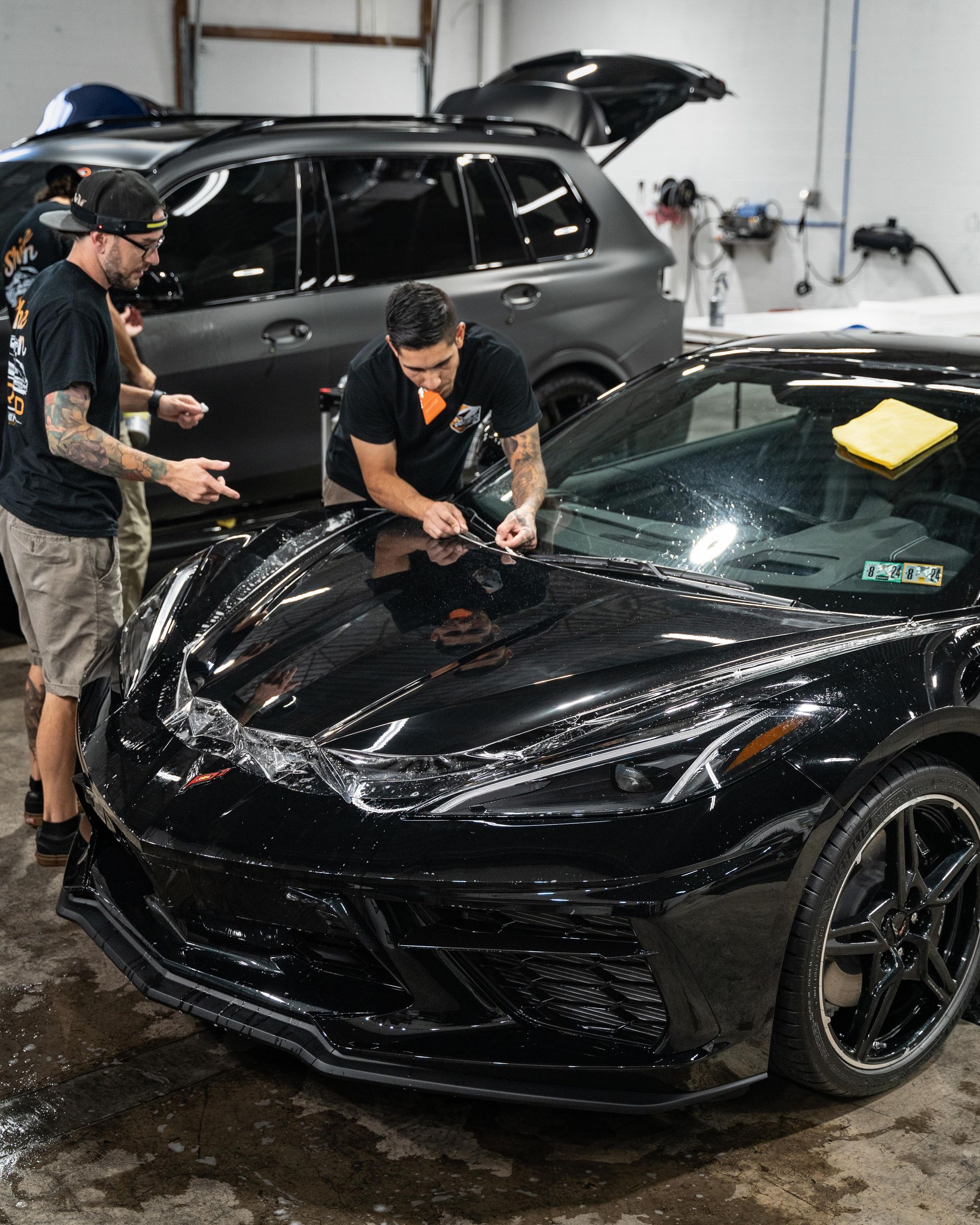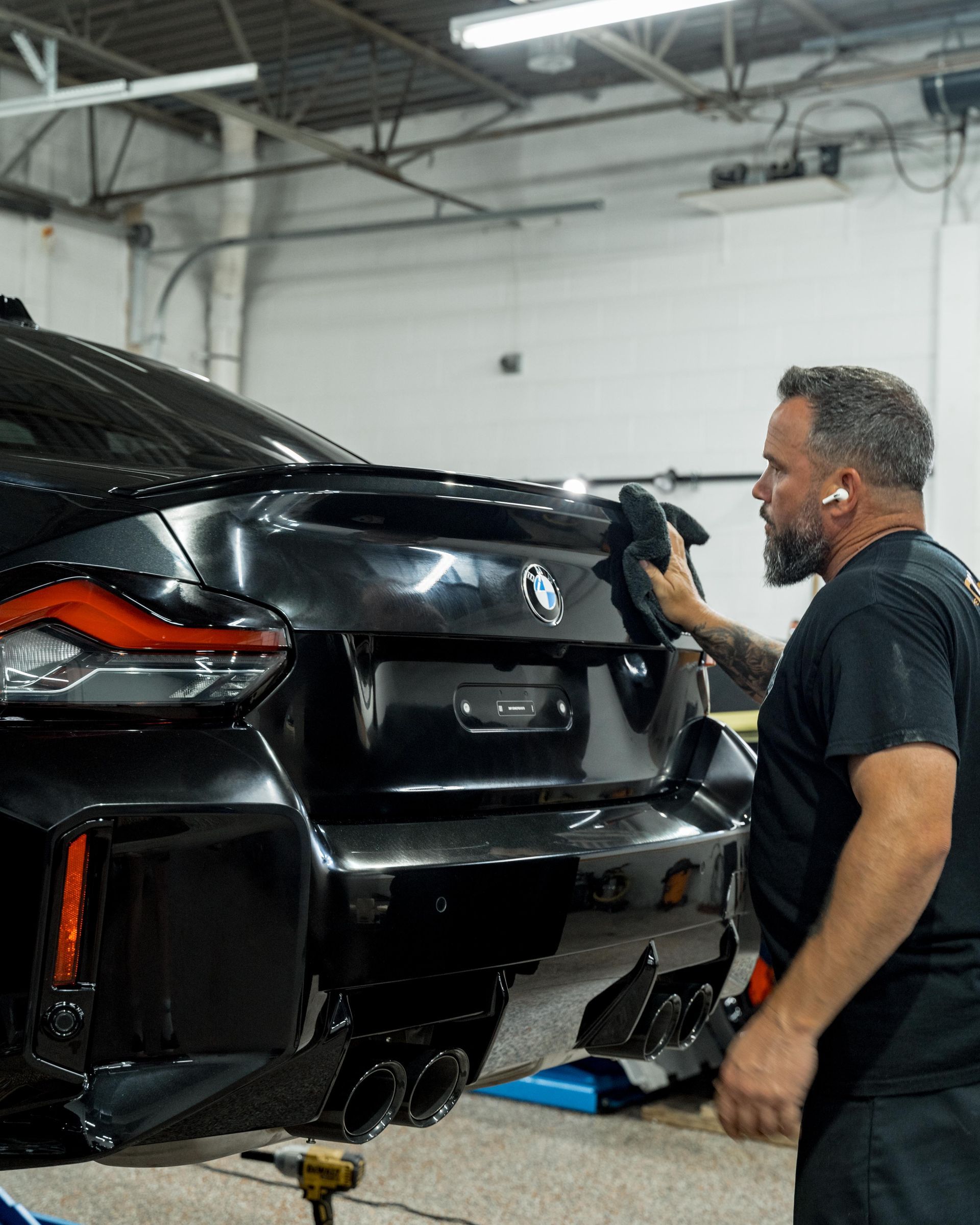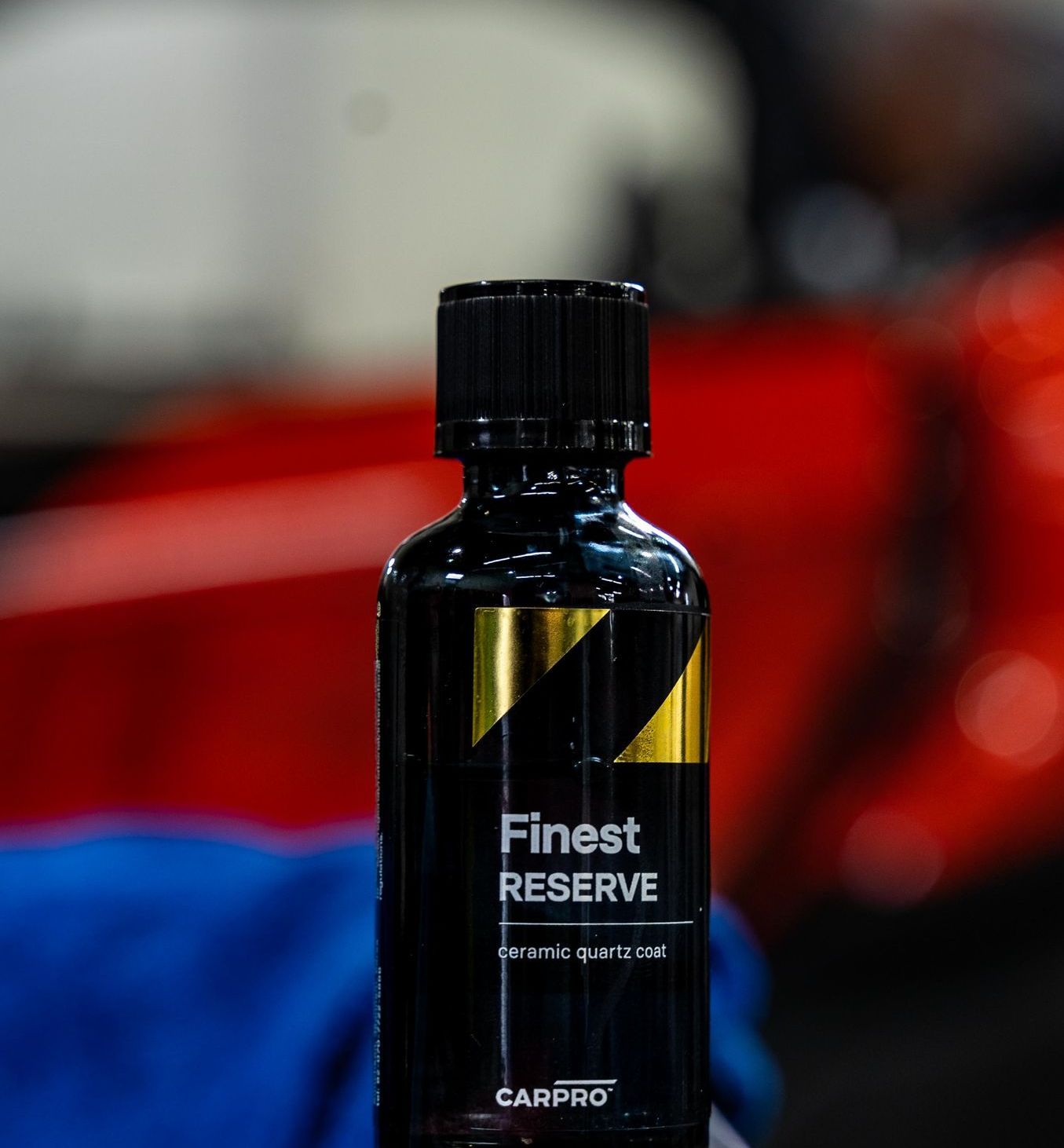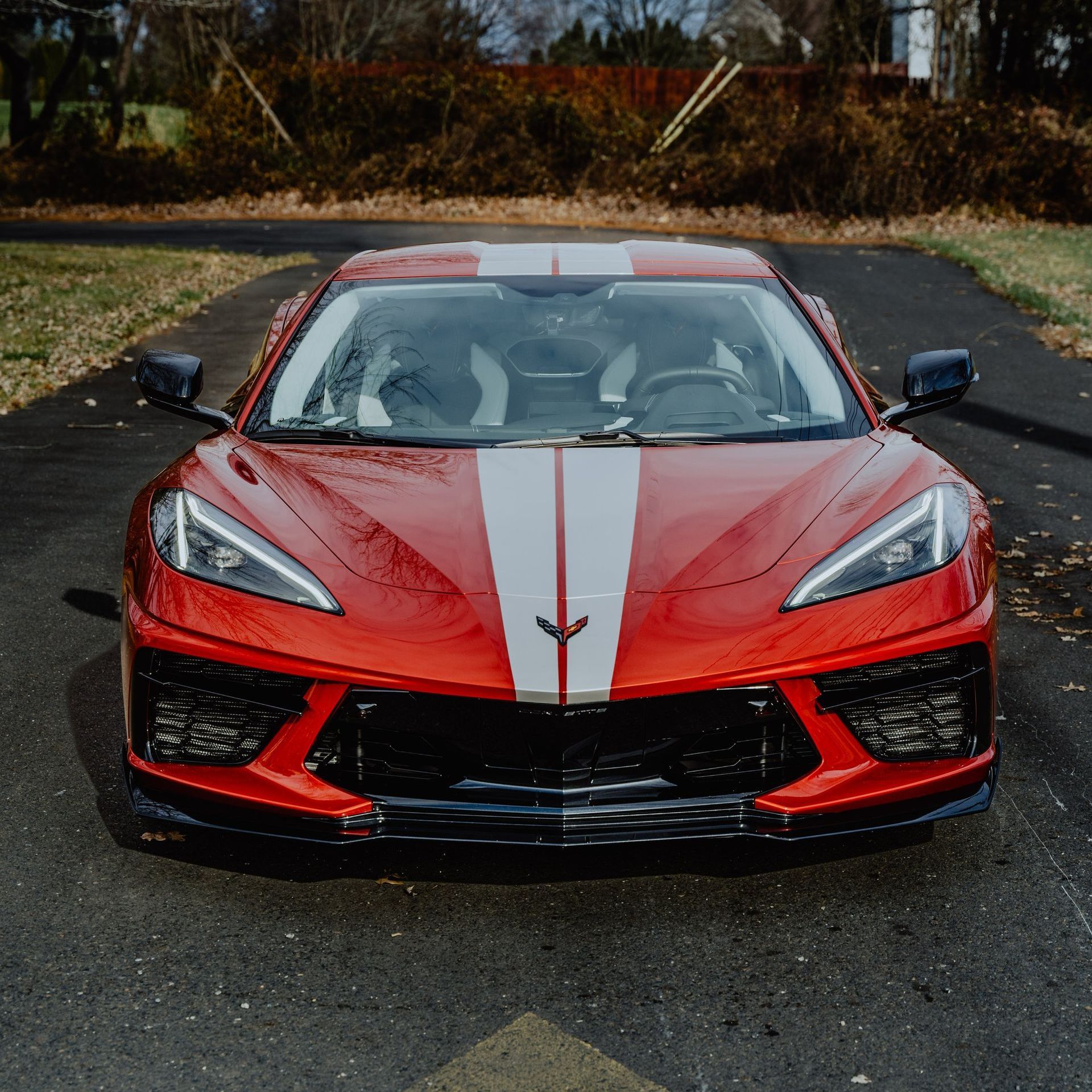Debunking Common Myths About Paint Protection Film: Benefits and Misconceptions Explained
CALL (833) 263-6273
Paint Protection Film (PPF) is often misunderstood, leading many car owners to overlook this valuable addition for their vehicles. Some think it’s only meant for shiny new cars or worry it will harm the paint beneath it. But here’s the truth: PPF is suitable for cars of all ages and acts as a shield against scratches, chips, and other damage. I’ve spent considerable time learning about PPF and seeing how it's transformed vehicles, preserving their beauty while ensuring they stay protected from everyday hazards. Let’s clear up these common myths and discover why investing in PPF can make a real difference for your car.
Some common myths about Paint Protection Film (PPF) include the belief that it is only suitable for new cars and that it damages the paint underneath; however, PPF is beneficial for vehicles of all ages and actually acts as a protective barrier, preserving the paint by absorbing impacts. Additionally, modern PPF technology is designed to be nearly invisible, maintaining the aesthetic appeal of your vehicle while offering substantial protection against scratches and environmental damage.
Myth #1: It's Only For New Cars
A widespread belief is that Paint Protection Film (PPF) is solely beneficial for new cars. However, this notion couldn’t be further from the truth. PPF offers substantial advantages for both new and older vehicles. The protective qualities of PPF can significantly enhance the longevity and visual appeal of a vehicle's paintwork regardless of its age.
Many car owners are discovering that applying PPF to older models can prevent unsightly scratches, chips, and other forms of cosmetic damage caused by everyday hazards. Take classic car enthusiasts, for instance. These individuals often invest considerable time and resources into maintaining their vintage vehicles. They understand that even the smallest blemish can detract from their car's aesthetic value and historical integrity.
Moreover, applying PPF isn’t solely an endeavor reserved for the sleek aesthetics of high-end vehicles or freshly purchased models; it's equally valuable for cars that have been on the road for several years. According to a 2024 auto enthusiast survey, a significant 45% of PPF users reported applying it to vehicles over five years old, acknowledging the value of protection beyond new models. This underscores the growing recognition within the automotive community that aging does not diminish a vehicle's need for care and protection.
The technology behind modern PPF has evolved dramatically, focusing on durability and a seamless finish. This means even older cars equipped with PPF can maintain their original appearance against potential threats like road debris and environmental wear. It’s crucial to realize that investing in PPF is not simply about maintaining aesthetics—it’s about safeguarding one’s investment for the long haul. As we continue to unravel the misunderstandings surrounding this product, let's turn our focus to how some believe it interferes with a vehicle’s appearance.
Myth #2: Paint Protection Film is Visible
Another common misconception is that PPF is highly noticeable, compromising the car’s aesthetics. Many potential users worry that once a layer of film is applied, their vehicle will be adorned with unsightly patches that distract from its sleek design. This notion might stem from older films that were indeed thicker, causing them to alter the appearance of the car. However, advancements in technology have transformed this narrative entirely. Today's modern PPF is designed with innovative materials that enable seamless installation, making the film virtually indistinguishable from the original paint once applied by professionals. This advancement ensures that the film integrates smoothly with every curve and contour of your vehicle, preserving its aesthetic appeal. Imagine this transformation: your car remains as striking as it was without any protective layer, just with added peace of mind. For instance, consider leading brand in PPF technology. Known for its high-gloss finish, it mirrors the vehicle's paint quality beautifully. If someone didn't know better, they might think you'd just polished your car! The clarity and shine blend perfectly with the car's surface rather than overshadowing it.
Furthermore, user experiences bolster these claims regarding invisibility. In addition to being unobtrusive, many contemporary PPFs are engineered for superior optical clarity—often exceeding a 90% rating! That means minimal distortion of your vehicle's original paint color or glossiness. Statistically speaking, around 90% of users report that high-quality paint protection films are nearly invisible once applied. This reinforces that not only is your vehicle safeguarded against environmental hazards and minor damages; it maintains its stylish appearance too.
As we move forward in our examination of misconceptions surrounding these protective films, it's essential to address another frequent concern regarding potential damage during removal.
Myth #3: It Damages Paint When Removed
The apprehension surrounding paint damage during the removal of PPF can be a significant deterrent for potential users, but this fear is largely unfounded. Quality PPF products are engineered with advanced technology that allows them to adhere securely without forming a permanent bond with the car's paint surface. This thoughtful design means that when it comes time to remove the film, it can be done so safely and effectively without harming the underlying finish.
Proper removal is key to ensuring your vehicle's paint remains intact. Professional installers, like those at Menard Premium Detailing, use specialized tools and techniques to facilitate this process. For example, they typically employ heat guns to gently warm the film, which softens the adhesive. This warmth allows for a smooth peeling action that minimizes the risk of any paint damage. Think of it as loosening a stubborn lid on a jar—applying just the right amount of warmth makes all the difference.
As noted by industry experts, it’s critical to avoid improper removal techniques often used by inexperienced individuals, as these methods can lead to unintended paint damage. Furthermore, many users find peace of mind in knowing that studies support the effectiveness of high-quality PPF. In fact, a study by the International Window Film Association found that 95% of vehicles with PPF showed no paint damage upon removal. Additionally, a survey conducted by leading automotive detailing companies revealed that 87% of customers reported their vehicle's paint remained pristine after PPF was taken off. These statistics reflect not only the quality of modern PPF but also underscore how crucial professional installation and removal processes are for preserving your vehicle's exterior.
While fears about damaging underlying paint when removing PPF are common, they often stem from misconceptions rather than facts. Choosing a skilled professional for both installation and removal is essential; their expertise ensures your car’s finish remains unblemished throughout the entire process—protecting your investment while enhancing its aesthetic appeal. With a clearer understanding of how proper handling preserves your vehicle's integrity, we now turn our attention to another prevalent misconception regarding maintenance difficulties associated with this protective film.
Myth #4: It's Difficult to Maintain
Some people believe that maintaining PPF is a complicated and arduous task. This misconception can easily deter potential users from choosing this effective protective solution for their vehicles. In fact, maintaining PPF is quite straightforward. Most PPFs are manufactured to be compatible with standard car washing practices, whether you're opting for hand washing techniques or using automatic car washes. The best part? You don't need any special equipment or products—just your regular car care supplies will do.
To keep your vehicle looking its best, think of maintaining PPF as you would for any other aspect of your car's care regimen. On the surface, it may seem like an added step, but it's more about the small adjustments you make to your routine rather than implementing an entirely new method of care. For example, while washing your car, simply use mild soap and water. Harsh chemicals are a big no-no; they can break down the film over time, leading to decreased effectiveness and aesthetic appeal.
Maintenance Tips
- Regular Washing: Regularly wash to remove dirt and grime that builds up and distracts from your vehicle's appearance.
- Avoid Harsh Chemicals: Stay away from strong detergents or abrasives that could degrade the film's protective qualities.
- Inspect Regularly: Checking for any lifting edges or imperfections in the film is important; addressing them early can save you from bigger issues down the road.
- Light Polish: Use non-abrasive products when polishing; this helps retain the film’s glossy appearance while ensuring it continues to protect efficiently.
One of the great features of high-quality PPF is its self-healing properties. If minor scratches occur—perhaps from branches brushing against your car during a drive—these scratches can fade over time with heat exposure. That’s not to say you should neglect maintenance; regular care combined with these self-repair abilities creates a dynamic defense against the wear and tear of daily use.
With minimal effort and time investment, you can keep your PPF looking pristine while ensuring it remains an effective layer of protection against life's various threats to your vehicle's finish. As we move forward, it’s essential to understand another common misunderstanding regarding those protective films—specifically how some believe they become less efficient over time.
Misconception: Paint Protection Film Peels Over Time
The fear of peeling film stems from experiences with subpar products or installations that didn't go as planned. However, with advancements in technology, contemporary high-quality PPF options, such as those from reputable brands have made peeling a concern of the past. These modern films are designed with advanced adhesive technology and UV inhibitors that bond securely to different surfaces for maximum durability.
Imagine installing a blanket that repels debris rather than absorbing it; that's how today's PPF operates on your vehicle's surface. What's even more reassuring is that a recent report by the PPF Manufacturers’ Association found that quality films installed by professionals boast an impressive 95% adhesion rate within the first five years. This statistic underscores the effectiveness of both superior materials and expert craftsmanship.
For optimal results, purchasing premium paint protection film aligns with seeking out experienced technicians who can ensure proper installation. Quality film, when paired with skilled application, minimizes the risk of peeling and provides years of reliable protection for your vehicle’s exterior. Furthermore, one way to prevent any peeling throughout its lifetime is regular maintenance which includes simple cleaning routines. A little bit of care goes a long way in extending the life of the film.
Instead of worrying about potential peeling, consider focusing on investing in top-grade PPF applied by certified professionals. This approach enhances your vehicle's durability while maintaining its sleek appearance. Transitioning now, let’s explore the various advantages that high-quality paint protection film brings to your vehicle.
The Real Benefits of Paint Protection Film
When it comes to protecting your vehicle, PPF stands out for several compelling reasons. One of the most notable advantages is its ability to offer scratch protection. It's like putting a shield over your car's paint, preventing unsightly blemishes caused by everyday driving. Whether encountering small stones on the road or shopping carts in parking lots, a layer of PPF can absorb impacts and significantly reduce wear and tear on your vehicle’s exterior.
In addition to scratches, the film boasts impressive chemical resistance. Everyday substances like bird droppings, tree sap, and road tar pose serious threats to your vehicle's finish. Over time, these elements can eat away at the paint's surface if left untreated. PPF acts as a barrier that resists these harsh chemicals, allowing you to maintain the pristine look of your car without extensive scrubbing or costly touch-ups.
However, one of the most ingenious features of modern PPF is its self-healing properties. This means that minor scratches can literally disappear when exposed to heat—think of warm sunlight restoring the surface back to its original state. This unique quality extends the life of your car's finish without requiring constant reapplication or correction procedures.
But it doesn't stop there; the presence of PPF also enhances your vehicle’s resale value. A well-maintained appearance can be a deciding factor for potential buyers, as they often consider the condition of the paint when determining their offer price. According to industry insights, vehicles equipped with PPF tend to fetch a higher resale price—often up to 15% more—than those without any protective layering.
Overall, these benefits create a substantial impact not just on aesthetics but also on long-term financial value. With PPF, you're making an investment in peace of mind while extending your car's lifespan and overall appeal. In summary, knowing the substantial advantages of Paint Protection Film can guide you in making an informed decision for maintaining your vehicle's appearance and value moving forward.
Expert PPF Installation in Philadelphia
Keep your vehicle’s paint flawless with Menard Premium Detailing’s expert paint protection film (PPF) services in Philadelphia, PA. Our high-quality PPF guards against rock chips, scratches, and road debris while maintaining a sleek, like-new finish. With precision installation and durable materials, your car gets long-term defense without sacrificing style. Protect your investment today—schedule your PPF service and drive with confidence!




